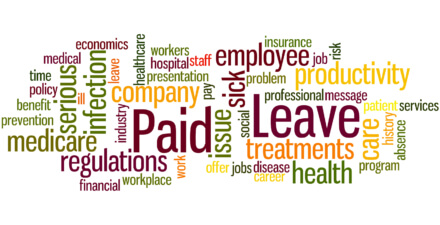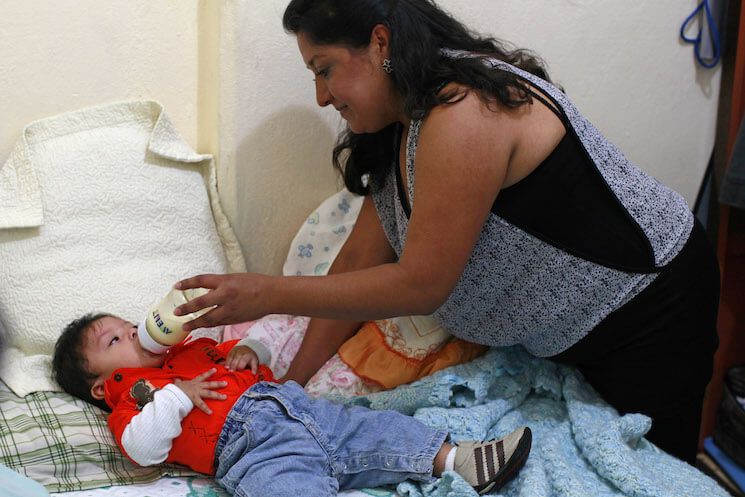Increasing evidence of the benefits of paid leave means Congress needs to consider a federal program like the FAMILY Act

Sen. Kirsten Gillibrand (D-NY) and Rep. Rosa DeLauro (D-CT) are expected to reintroduce today the FAMILY (Family Medical Insurance Leave) Act, a bill that would establish the first near-universal federal program to provide workers with paid leave following the birth or adoption of a child, or to care for a seriously ill family member or recover from their own illness.
Today, the primary federal law supporting workers who are new parents or have caregiving responsibilities that require them to take time away from work is the Family and Medical Leave Act, enacted more than 25 years ago. That law requires employers with more than 50 employees to allow workers to take unpaid time off from work and return to their jobs when they take time for the arrival of a new child, family caregiving, or illness. While certainly a milestone achievement, however, FMLA covers only three out of five workers and disproportionately excludes low-income and less-educated workers. And, of course, many workers can’t afford to take unpaid leave, and most employers do not voluntarily provide paid leave.
The United States is the only developed country without a national paid leave program. A 2014 report by the president’s Council of Economic Advisers provided substantial evidence of the economic effects of lack of access to paid leave, including lower labor force participation and reduced lifetime earnings. Moreover, there is now growing evidence from existing paid leave programs of the impact they have on families, businesses, and the U.S. economy. Congress should consider that evidence as it takes up the FAMILY Act and any other paid leave proposals.
Equitable Growth has funded research on paid leave and has published numerous reports and articles describing and analyzing existing research on the effectiveness of paid family leave programs in the United States and overseas. Six states and the District of Columbia either have established or are developing paid leave programs. The existing state programs—the oldest, in California, dates back to 2004—have provided a laboratory for researchers to study labor and health outcomes for individuals, performance and productivity outcomes for firms, and broader macroeconomic outcomes of paid family and medical leave. This work builds on a considerable body of research from long-established programs in some European countries. The answers to many questions are already coming into focus.
Here in the United States, the studies so far have mostly focused on paid parental leave. There is evidence, for example, that in states with paid leave insurance programs, mothers who use paid leave are more likely to remain in the workforce in the year following a birth. The women experiencing the benefits of these new programs are more likely to be less educated, which makes sense given that they are less likely to have had access to paid leave in the absence of a state program.
In addition, studies looking at access to paid leave, from employers or states, across the United States have shown that in instances where paid leave is provided there is less reliance on public assistance to contend with family medical emergencies. Moreover, there has been no evidence of higher employee turnover or rising wage costs for businesses.
Research on parental leave programs abroad also suggests that paid leave of the length contemplated by the FAMILY Act, up to 12 weeks, has a positive effect on women’s income and likelihood of remaining in the workforce. Unlike programs in many other countries, the FAMILY Act is gender neutral, which encourages men and women equally to take leave to care for a child or ailing loved one. And we’re beginning to learn more about the economic implications of these policies as states implement their paid leave programs.
To be clear, while paid leave for new parents has critical benefits, and most research on paid leave has focused on this kind of leave, this support is just as important for workers who are trying to cope with a personal health problem or care for a family member with a serious health condition. As the U.S. population ages, more workers need time off to care for elderly family members or see to their own illnesses. Paid leave is also important for issues associated with a family member’s military deployment.
Some have pointed to a tax credit included in the 2017 Tax Cuts and Jobs Act as a meaningful way of addressing the need for paid leave, but as I wrote before this legislation was enacted, the available evidence suggests this will do little to solve the problem. Rather than encouraging new or improved family and medical leave policies, the credit can be expected to benefit firms that already offer this benefit. These businesses are larger and tend to pay their workers more, so the subsidy is unlikely to be of great help to the low-income workers who most need support.
In 2018, Bridget Ansel and I summarized the set of principles for a national paid leave policy that we originally laid out in a more wide-ranging paper we wrote for the Hamilton Project. We said that a paid leave program should:
- Cover the range of family and medical needs that require time away from work
- Be available to all workers—men and women—equally
- Provide adequate length of leave to address care needs
- Have a sufficiently high wage-replacement rate to make a difference in people’s lives
These principles are based on the research that has been done in the United States and abroad, and on clear needs in American society. As Congress considers the FAMILY Act and other proposals for paid family leave, it would do well not only to review the research on existing programs, but also consider these principles. The health of working families and the U.S. economy will increasingly depend on a sound, evidence-based national paid leave program.






